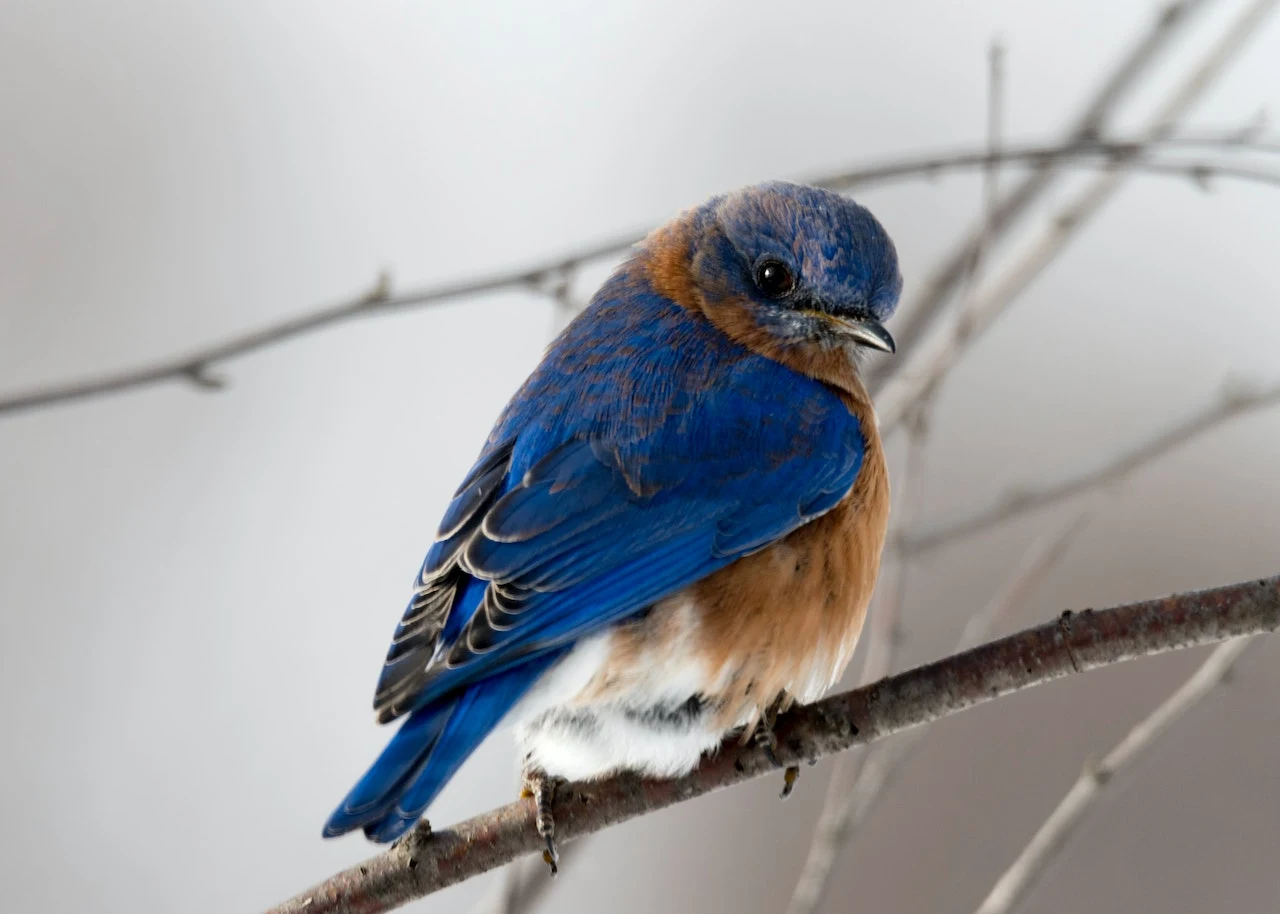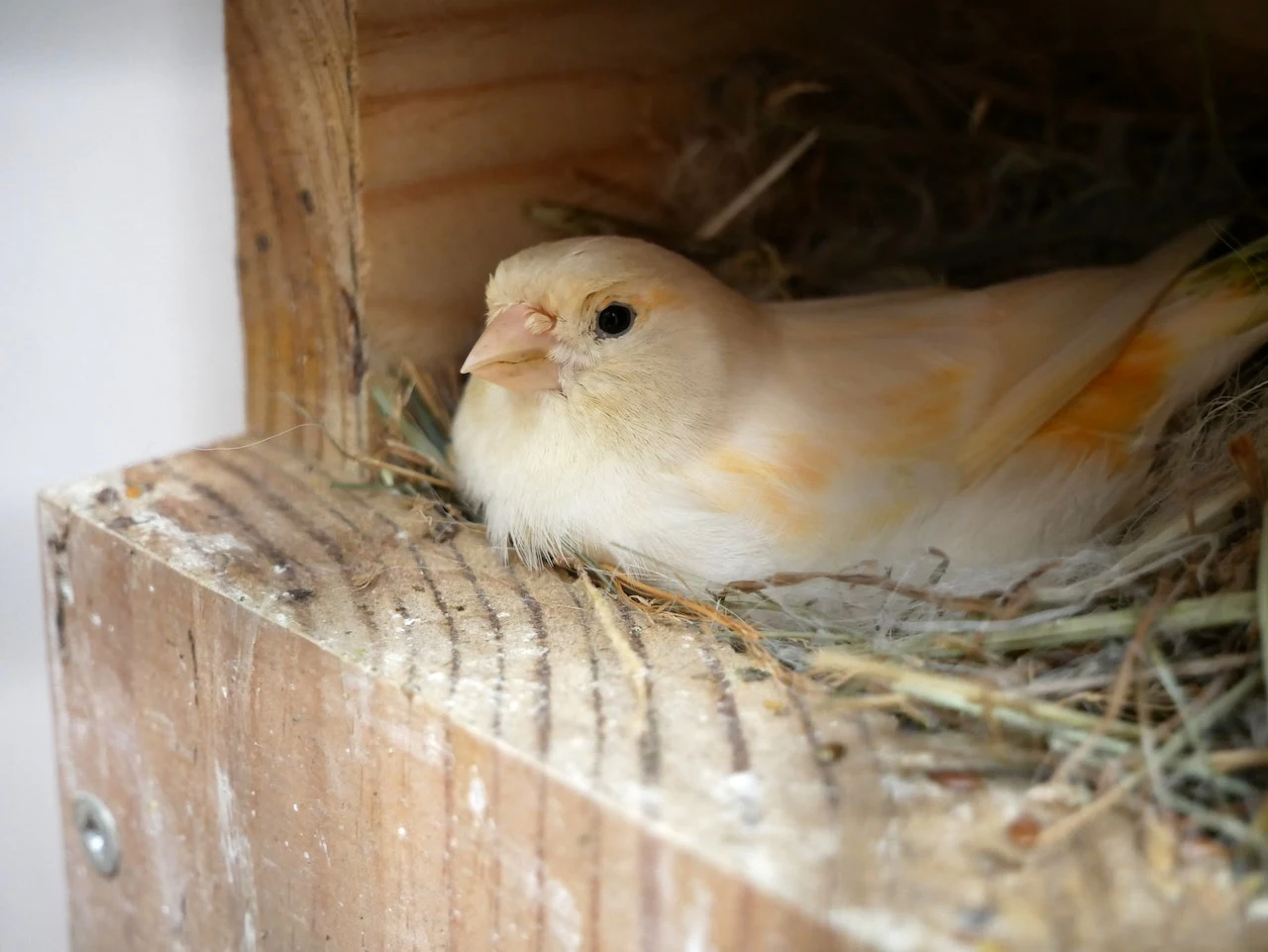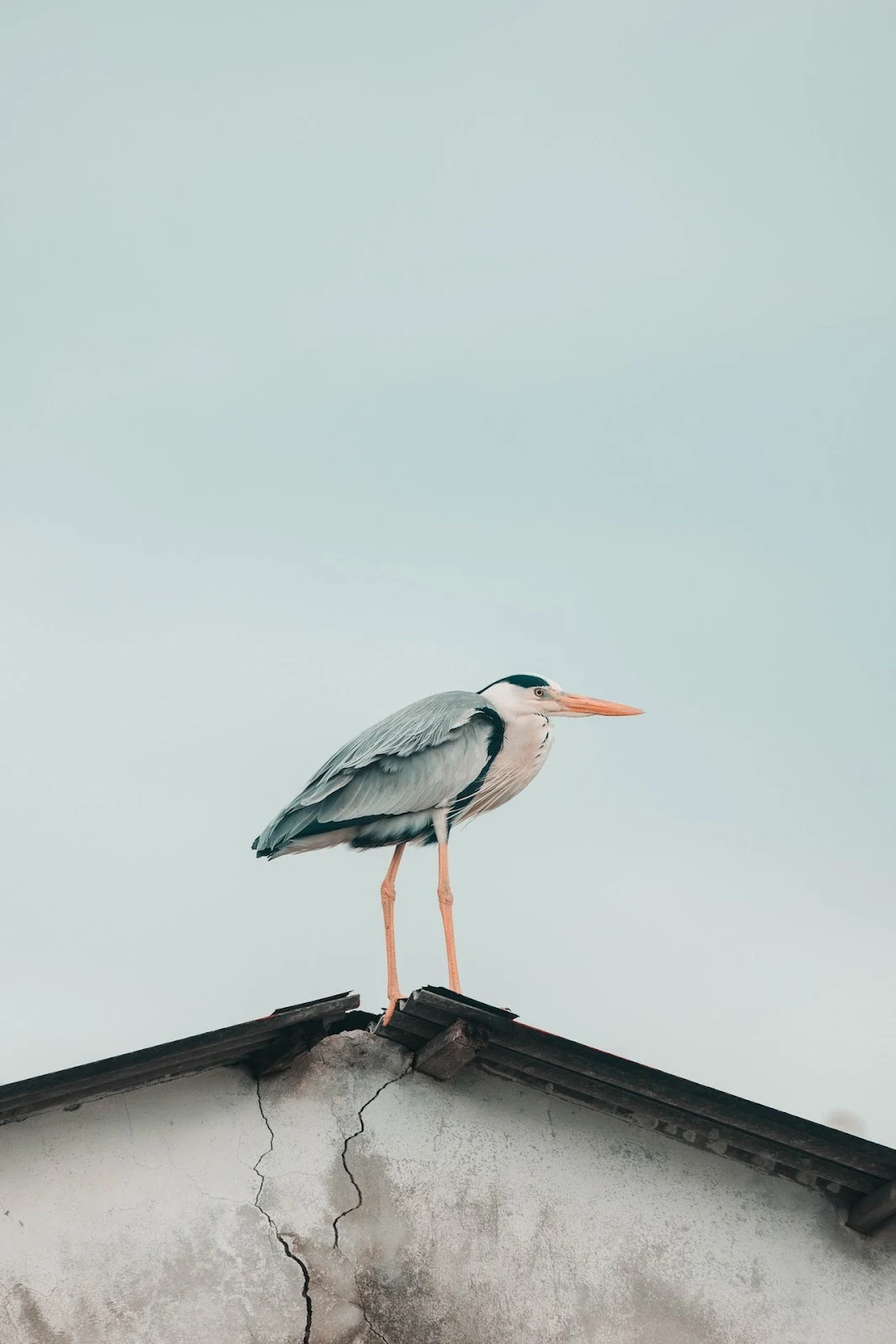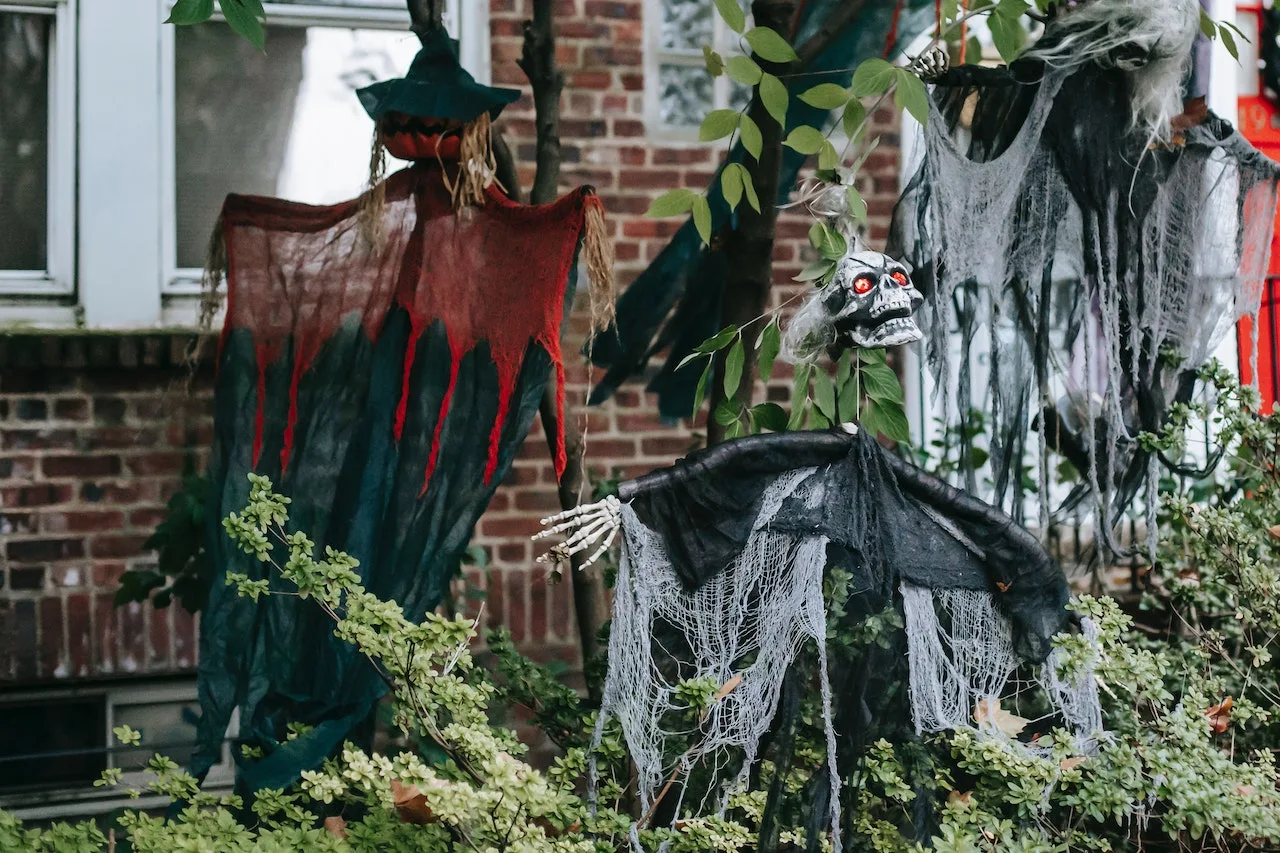Preventing Bird Nests on Your Porch: Fast and Effective Solutions
By Abu Rizal at: February 03, 2023
The problem of birds nesting on porches is a common issue faced by many homeowners. Birds, like all creatures, are in search of a safe and suitable place to build their nests and raise their young.
Porches, with their covered roofs and often protected location, can provide an attractive nesting site for birds.
I. Introduction
However, this can lead to several problems for homeowners, such as the accumulation of bird droppings, feathers, and nesting materials, which can pose health hazards and create unpleasant odors.In addition, bird nests can also cause damage to the porch itself, and their presence can attract other unwanted pests.
Despite these challenges, it is important to approach the issue of birds nesting on porches in a humane and responsible manner.
This article will provide practical and effective solutions for preventing birds from making their homes on your porch, while also considering the welfare of the birds and the impact on the environment.
II. Reasons for Birds Nesting on Porches
A. Natural Behavior of Birds
Birds are naturally driven to build their nests in safe and sheltered locations, and porches provide an ideal environment for them to do so.Birds are attracted to porches due to the coverage and protection they offer from the elements and potential predators.
They are also attracted to the stability and structure of the porch, which provides a solid foundation for building their nests.
B. Availability of Suitable Nesting Sites
Another factor that contributes to birds nesting on porches is the scarcity of suitable nesting sites in their natural habitats.Due to habitat loss and other factors, birds are often forced to search for alternative nesting locations.
Porches provide an easily accessible and attractive option for birds, especially in urban and suburban areas where natural habitats are limited.
It is important to understand that birds nesting on porches is a natural behavior and should be approached with empathy and respect.
However, it is possible to prevent birds from making their homes on your porch in a humane and effective manner, as we will discuss in later sections of this article.
III. Potential Problems with Bird Nests
A. Health Hazards
Bird droppings, feathers, and nesting materials can pose health hazards to humans.These materials can contain bacteria, fungi, and other pathogens that can cause respiratory problems, eye infections, and other health issues.
In addition, bird nests can also attract other pests such as insects, which can further exacerbate health problems.
B. Property Damage
Bird nests, especially those made of twigs and sticks, can cause damage to the porch and its structure.The weight of the nests and the accumulation of droppings and debris can weaken the porch and cause it to become unstable.
In addition, birds can also damage the paint and finish of the porch with their beaks and claws.
C. Unpleasant Odors
The accumulation of bird droppings and debris in and around the nest can also lead to unpleasant odors.The strong smell of bird droppings can be unpleasant and even overpowering, especially during warm weather.
The odor can also attract other pests, such as insects, which can further exacerbate the problem.
It is important to address these potential problems with bird nests in order to maintain the health, safety, and aesthetic of your porch.
In the following sections, we will provide practical solutions for preventing birds from nesting on your porch and addressing the issues that arise from their presence.
IV. Preventing Birds from Nesting on Your Porch
A. Proper Maintenance of the Porch Area
One of the most effective ways to prevent birds from nesting on your porch is to maintain the area in a clean and orderly manner.This includes regularly cleaning up bird droppings and debris, trimming trees and shrubs near the porch, and removing any potential nesting materials such as twigs and sticks.
A clean and well-maintained porch will be less attractive to birds and discourage them from nesting.
B. Installation of Physical Barriers
Another effective solution for preventing birds from nesting on your porch is the installation of physical barriers.This can include installing bird spikes or netting on ledges and overhangs, or covering the porch with a solid roof or screen.
Physical barriers prevent birds from landing and building nests on the porch, and provide a deterrent for their return.
C. Use of Deterrents
In addition to physical barriers, the use of deterrents can also be effective in preventing birds from nesting on your porch.This can include the use of audio and visual deterrents, such as bird-scaring devices and decoys, or the use of chemical deterrents, such as taste repellents.
Deterrents work by creating an unpleasant or intimidating environment for birds, discouraging them from nesting on your porch.
It is important to choose the right combination of strategies to prevent birds from nesting on your porch, and to approach the issue in a humane and responsible manner.
By implementing these solutions, you can effectively prevent birds from making their homes on your porch while also considering the welfare of the birds and the impact on the environment.
V. Proper Maintenance of the Porch Area
A. Cleaning up Debris
One of the key aspects of maintaining a porch to prevent bird nesting is to regularly clean up any bird droppings and debris.This helps to eliminate any potential health hazards and unpleasant odors, and also makes the porch less attractive to birds.
Cleaning up debris can be done using a mild soap and water solution, and any porous surfaces should be thoroughly disinfected to reduce the risk of health hazards.
B. Removing Any Potential Nesting Sites
Another important aspect of maintaining a porch to prevent bird nesting is to remove any potential nesting sites.This includes removing any loose twigs and sticks that birds could use to build their nests, as well as trimming back trees and shrubs near the porch.
Removing these potential nesting sites can make the porch less attractive to birds and discourage them from building their nests.
C. Repairing Any Damaged Areas
In addition to cleaning up debris and removing potential nesting sites, it is also important to repair any damaged areas of the porch that could make it more attractive to birds.This includes fixing any cracks or holes in the porch or its structure, as well as repairing any damaged paint or finish.
By keeping the porch in good condition, you can reduce the likelihood of birds nesting on your porch and prevent any further damage.
By following these steps for proper maintenance of the porch area, you can effectively prevent birds from nesting on your porch and keep the area clean, safe, and attractive.
VI. Physical Barriers
A. Netting
The use of bird netting is a common and effective solution for preventing birds from nesting on your porch.Bird netting can be installed over the porch, covering ledges, overhangs, and other areas that birds may attempt to nest on.
The netting provides a physical barrier that prevents birds from landing and building nests, while still allowing air and light to flow through.
B. Plastic or Metal Spikes
Bird spikes are another physical barrier option that can be used to prevent birds from nesting on your porch.These spikes, made of plastic or metal, can be installed on ledges, overhangs, and other areas that birds may attempt to nest on.
The spikes provide a physical barrier that makes it difficult for birds to land and build nests, while not causing harm to the birds.
C. Screens
Installing a screen or solid roof on your porch can also be an effective solution for preventing birds from nesting.This type of physical barrier provides a complete coverage of the porch, making it difficult for birds to access and build nests.
Screens can be made of mesh or solid material, and can be designed to blend in with the surrounding environment.
Physical barriers, such as netting, spikes, and screens, are an effective solution for preventing birds from nesting on your porch.
They provide a physical barrier that discourages birds from accessing the porch, while still allowing for the flow of air and light.
VII. Deterrents
A. Visual Deterrents (Reflective Tape, Scarecrows, etc.)
Visual deterrents, such as reflective tape, scarecrows, and other similar items, can be effective in preventing birds from nesting on your porch.These deterrents use bright colors, flashing lights, or other visual cues to discourage birds from landing and building nests on your porch.
Visual deterrents are particularly useful when combined with other preventative measures, such as physical barriers or proper maintenance.
B. Audio Deterrents (Ultrasonic Devices, Bird Distress Calls, etc.)
Audio deterrents, such as ultrasonic devices and bird distress calls, can also be effective in preventing birds from nesting on your porch.These deterrents emit high-pitched sounds or bird distress calls that are intended to scare birds away and discourage them from landing on your porch.
Some audio deterrents are designed to emit a sound that is only audible to birds, making them an effective and humane solution for preventing bird nesting.
C. Chemical Deterrents (Repellent Sprays, Taste Deterrents, etc.)
Chemical deterrents, such as repellent sprays and taste deterrents, can also be used to prevent birds from nesting on your porch.These deterrents use a bitter or unpleasant-tasting substance to discourage birds from landing and building nests on your porch.
Chemical deterrents can be an effective solution, but they should be used with caution and only in accordance with the manufacturer's instructions to avoid causing harm to birds or other wildlife.
Deterrents, such as visual, audio, and chemical deterrents, can be effective in preventing birds from nesting on your porch.
They provide a means of discouraging birds from accessing the porch, while still being humane and non-invasive. When selecting and using deterrents, it is important to consider their effectiveness, safety,
and environmental impact, and to use them in combination with other preventative measures for the best results.
VIII. Best Practices for Using Deterrents
A. Placement of Deterrents
The placement of deterrents is crucial to their effectiveness in preventing birds from nesting on your porch. Deterrents should be placed in areas where birds are most likely to attempt to nest,such as on ledges, overhangs, and other areas that provide access to the porch.
When placing deterrents, it is important to ensure that they are visible and accessible to birds, while still being unobtrusive and non-invasive to the surrounding environment.
B. Timing of Deterrent Use
The timing of deterrent use is also important in preventing birds from nesting on your porch.Deterrents should be used before birds have the opportunity to build nests on your porch. For example, if birds typically begin nesting in your area in the spring, deterrents should be installed and activated before this time to prevent birds from landing and building nests.
C. Regular Maintenance and Replacement of Deterrents
Regular maintenance and replacement of deterrents is essential to their effectiveness in preventing birds from nesting on your porch.Deterrents may become damaged over time or may become less effective due to exposure to the elements.
Regular maintenance and replacement ensures that deterrents continue to provide a means of discouraging birds from accessing the porch.
By following best practices for the placement, timing, and maintenance of deterrents, you can effectively prevent birds from nesting on your porch. It is important to consider the effectiveness, safety, and environmental impact of deterrents,
and to use them in combination with other preventative measures, such as physical barriers and proper maintenance, for the best results.
IX. Considerations When Choosing Deterrents
A. Effectiveness of the Deterrent
When choosing deterrents to prevent birds from nesting on your porch, it is important to consider their effectiveness.Different deterrents may be more or less effective for different bird species, depending on their natural behaviors, migration patterns, and other factors.
It is important to research and choose deterrents that have been proven to be effective in preventing bird nesting in your area.
B. Safety for the Birds
Safety for the birds is also an important consideration when choosing deterrents. Deterrents should be humane and non-invasive, avoiding causing harm to birds or other wildlife.Some deterrents, such as chemical deterrents, can be harmful to birds if not used in accordance with the manufacturer's instructions. It is important to research and choose deterrents that are safe for birds and other wildlife.
C. Environmental Impact
The environmental impact of deterrents is also a consideration when choosing deterrents to prevent birds from nesting on your porch. Deterrents should be safe for the environment,avoiding causing harm to the surrounding ecosystem. Some deterrents, such as chemical deterrents, can have a negative impact on the environment if not used in accordance with the manufacturer's instructions.
It is important to research and choose deterrents that have a minimal impact on the environment.
D. Local Regulations
Local regulations and restrictions on the use of bird deterrents may also be a consideration when choosing deterrents to prevent birds from nesting on your porch.Some areas have regulations regarding the use of certain types of deterrents, such as chemical deterrents, or restrictions on the placement or use of deterrents.
It is important to research and understand local regulations before choosing and using deterrents to prevent bird nesting on your porch.
By considering the effectiveness, safety, environmental impact, and local regulations, you can choose the most appropriate and effective deterrents to prevent birds from nesting on your porch.
It is important to research and choose deterrents that are appropriate for your specific needs and situation, and to use them in combination with other preventative measures for the best results.
X. Alternatives to Deterrents
A. Providing Alternative Nesting Sites
One alternative to deterrents is to provide alternative nesting sites for birds.By offering birds alternative sites to nest, you can encourage them to nest elsewhere on your property or in your community, reducing the likelihood of them nesting on your porch.
You can provide alternative nesting sites by installing birdhouses, bird feeders, or bird baths, or by planting bird-friendly plants and shrubs.
B. Encouraging Birds to Nest Elsewhere On The Property
Another alternative to deterrents is to encourage birds to nest elsewhere on your property.By making changes to the layout or design of your property, you can discourage birds from nesting on your porch and encourage them to nest elsewhere.
For example, you can install a trellis or a birdhouse away from your porch, or you can create a bird-friendly garden in another area of your property.
C. Promoting Bird-friendly Habitats In Your Community
Finally, promoting bird-friendly habitats in your community is another alternative to deterrents. By encouraging your neighbors and community members to create bird-friendly habitats,you can help create a larger network of safe and suitable nesting sites for birds.
This can reduce the likelihood of birds nesting on your porch and other structures in your community, promoting a healthy and sustainable environment for birds and other wildlife.
By using alternatives to deterrents, you can help create a safe and suitable environment for birds, while still reducing the likelihood of them nesting on your porch.
It is important to be mindful of the impact of your actions on birds and other wildlife, and to promote bird-friendly habitats in your community for the long-term health and well-being of these important species.
XI. Legal Considerations
A. Federal and State Laws Protecting Birds
It is important to be aware of the legal considerations when preventing birds from nesting on your porch.In the United States, many species of birds are protected by federal and state laws, including the Migratory Bird Treaty Act.
This act makes it illegal to disturb or destroy bird nests, eggs, or young without a permit, even if they are located on your property.
B. Penalties For Disturbing Or Destroying Bird Nests
Penalties for violating these laws can include fines, imprisonment, or both. In addition, it is also important to be mindful of local regulations, as some communities may have additional laws or regulations regarding bird protection.It is important to consult with your local wildlife agency or a knowledgeable attorney before taking any actions to prevent birds from nesting on your porch.
By understanding the legal considerations, you can ensure that you are taking appropriate measures to prevent birds from nesting on your porch, while also protecting these important species and complying with the law.
XII. Conclusion
A. Summary of Steps for Preventing Birds from Nesting on Your Porch
In conclusion, preventing birds from nesting on your porch involves a combination of proper maintenance of the porch area, the use of physical barriers and deterrents, and the consideration of alternatives and legal considerations.By taking these steps, you can effectively reduce the likelihood of birds nesting on your porch, while also promoting a safe and suitable environment for these important species.
B. Importance of Responsible and Humane Bird Control
It is important to remember that birds play a crucial role in our ecosystem and are an important part of our natural heritage.Therefore, it is essential to approach bird control in a responsible and humane manner. This means using deterrents and other methods that do not harm birds or their nests, and promoting bird-friendly habitats in your community.
By being mindful of the impact of our actions on birds and other wildlife, we can help ensure a healthy and sustainable environment for these important species for generations to come.
XIII. Resources
A. Websites for More Information on Bird Control
If you are looking for more information on bird control and how to prevent birds from nesting on your porch, there are many resources available online.Some useful websites to consider include the U.S. Department of Agriculture's Wildlife Services, the Humane Society of the United States, and the American Bird Conservancy.
These organizations offer a wealth of information on bird control, including tips on how to prevent birds from nesting, information on the use of deterrents, and resources for finding alternative nesting sites.
B. Organizations Dedicated to Bird Conservation
In addition to organizations dedicated to bird control, there are also many organizations dedicated to bird conservation.These organizations work to promote the protection and preservation of bird populations and their habitats, and can be a valuable resource for anyone interested in learning more about birds and their role in our ecosystem.
Some notable organizations include the National Audubon Society, the Cornell Lab of Ornithology, and the International Union for Conservation of Nature.
By supporting these organizations, you can help promote the conservation and protection of birds and their habitats, and contribute to a healthy and sustainable environment for these important species.
XIV. References
A. List of Sources Used in the Article
- U.S. Department of Agriculture's Wildlife Services. (2021). Bird Damage Management.
- Humane Society of the United States. (2021). Keeping Birds Away.
- American Bird Conservancy. (2021). Bird-Safe Buildings.
- National Audubon Society. (2021). Bird-Friendly Communities.
- Cornell Lab of Ornithology. (2021). Living with Birds.
- International Union for Conservation of Nature. (2021). Bird Conservation.













